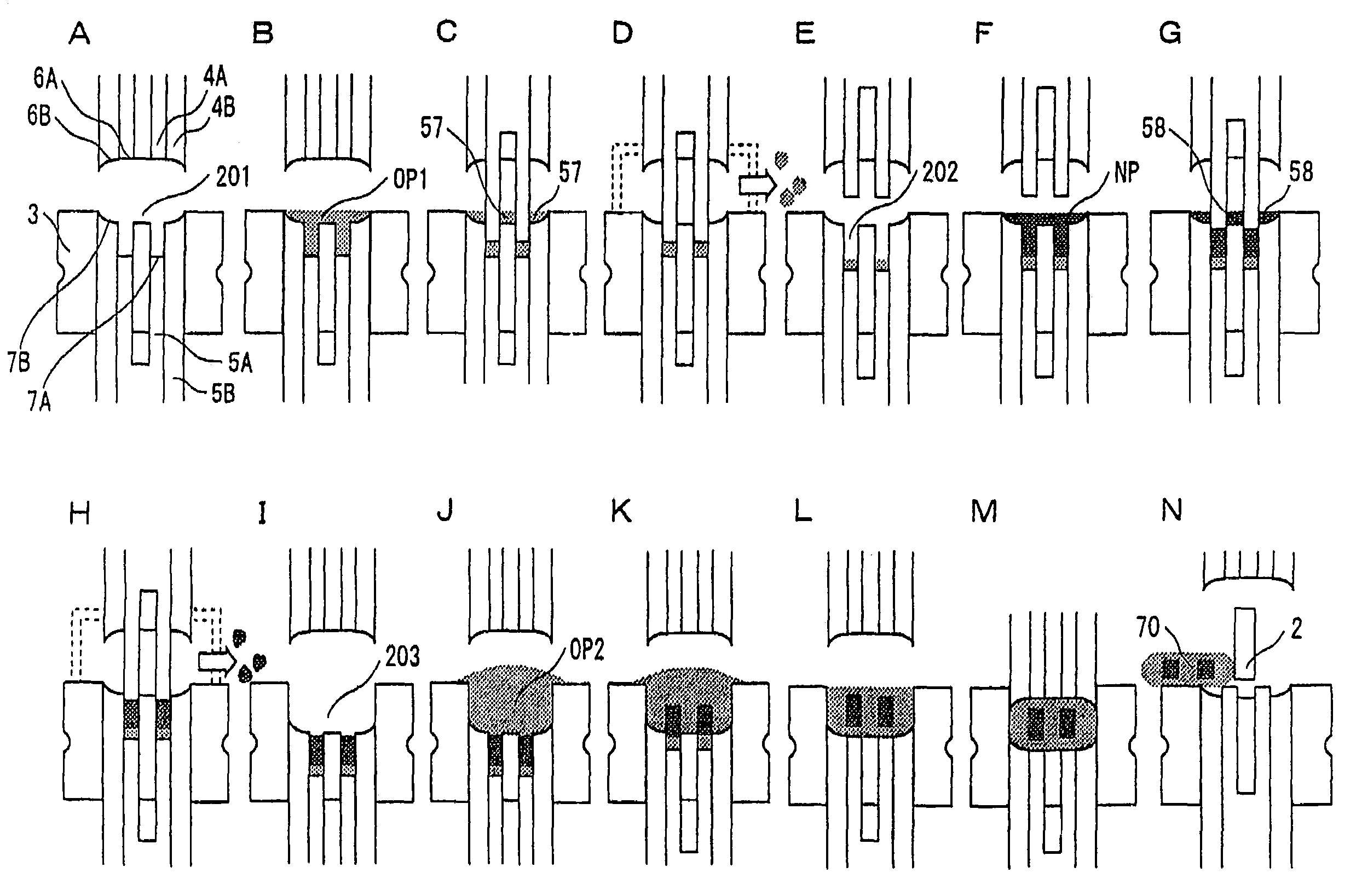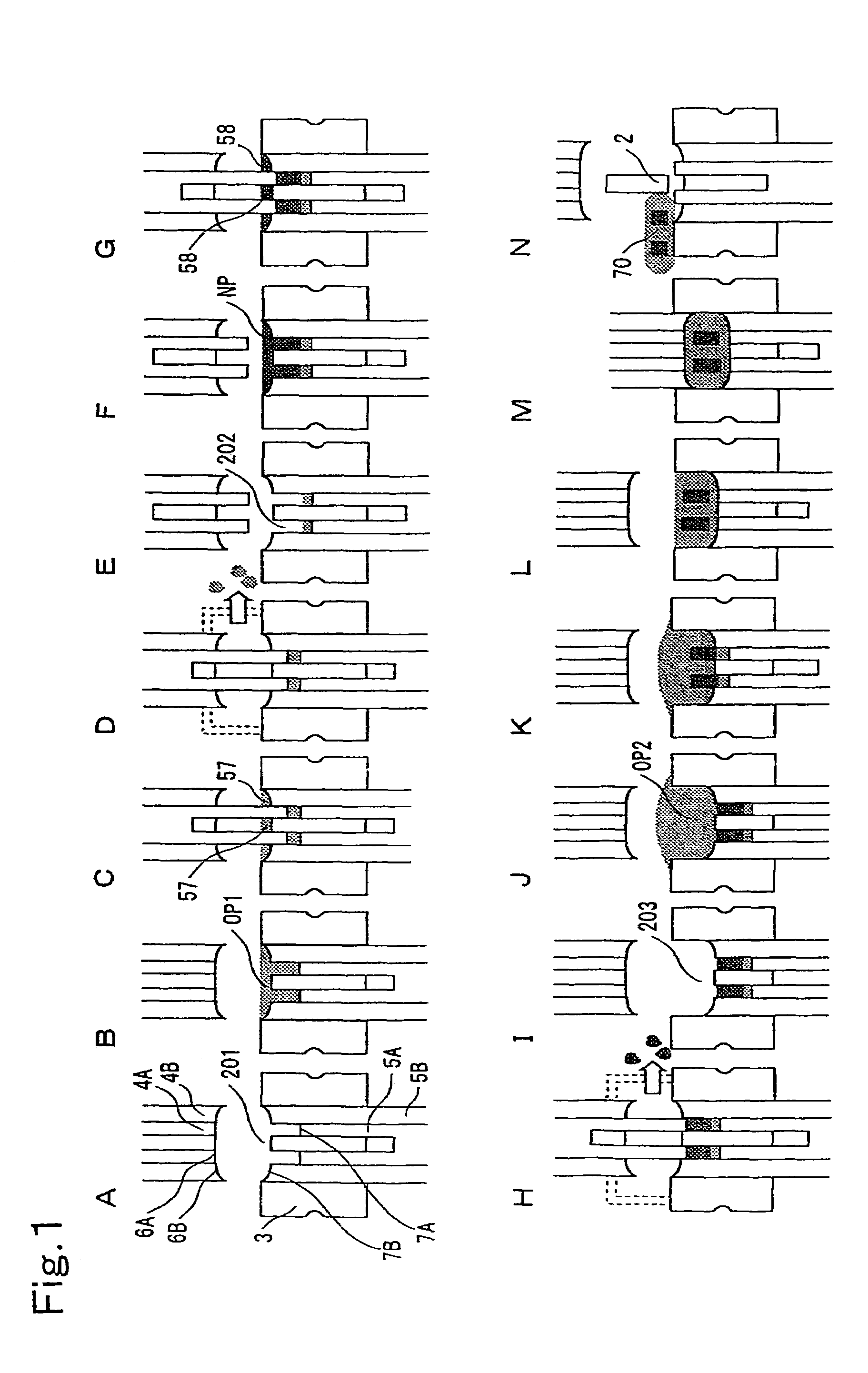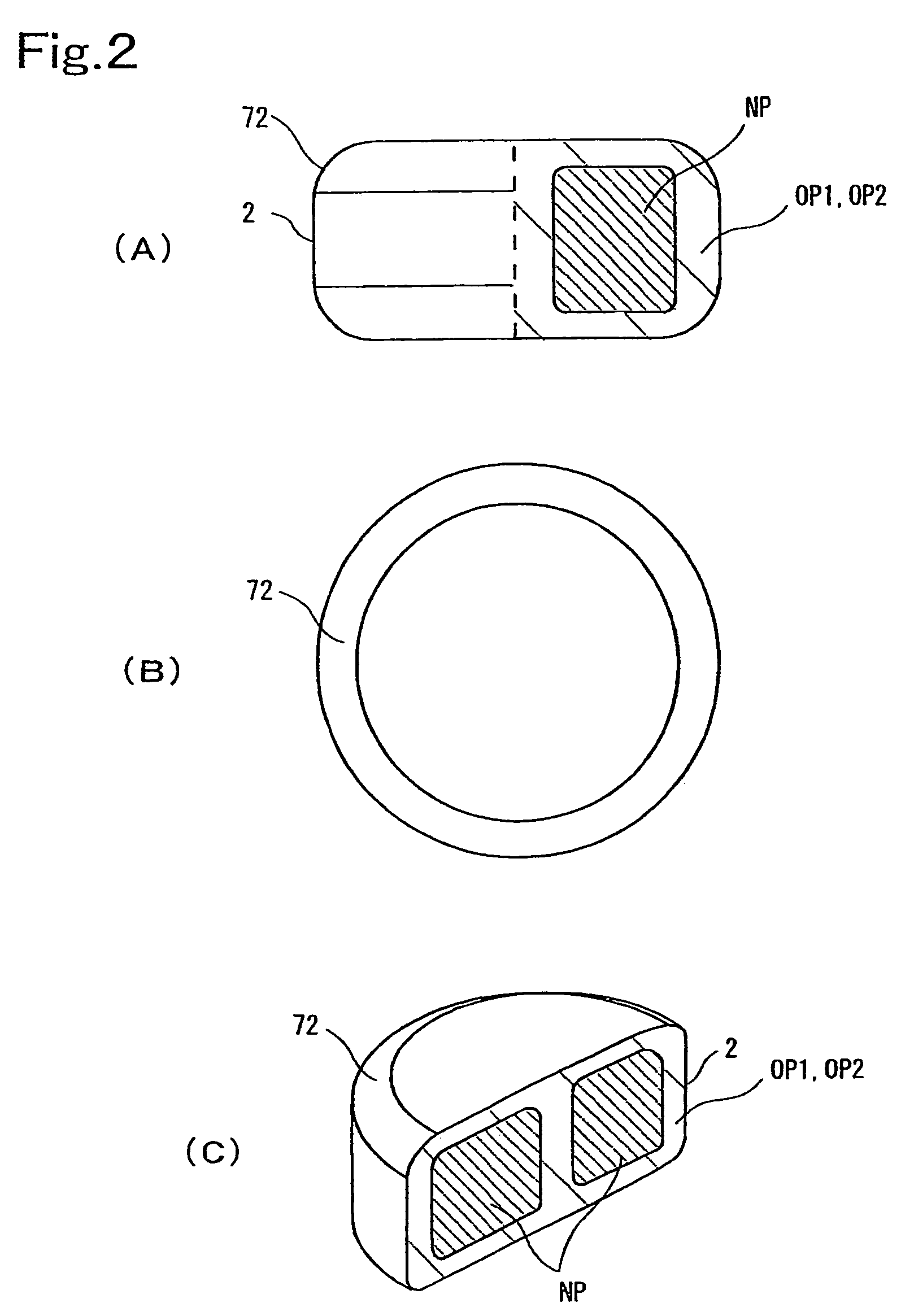However, if the outer layer containing the core tablet is a
controlled release coating (e.g.,
enteric coating, sustained release
coating), administration of a divided tablet may result in the
drug not delivering its inherent properties or causing side effects, thus making
drug splitting impossible at present.
Further, press-coated or film-coated tablet containing optically unstable
drug ingredients results, if split, in ready
exposure of the core tablet to the outside environment, making administration of a divided tablet problematic for the aforementioned reasons.
For this reason, the
workload is considerably higher than with manufacturing methods for ordinary compression molded products, leading to a major problem—low productivity.
In the conventional method of supplying molded products or cores, on the other hand, such molded products or cores are each supplied individually into the die within the fast rotating turntable, frequently resulting in cores not being supplied or too many thereof supplied into the die and therefore producing molded products with no or too many cores.
To prevent such problems, complicated mechanisms / devices are required to monitor core supply and inspect final products for
quality assurance purposes, giving rise to larger and more complex machines.
Displacement of the core from the center results in the outer layer of that area becoming thinner, making products prone to molding failures such as capping—peeling of part of the molded body—and lamination—
cracking of the molded product in layered form.
However, it is normally difficult to operate even the aforementioned core centering apparatus with a high-speed turntable (40 to 60 rpm), which are ordinarily used in tabletting machines, due to problems including core centering accuracy and stable core supply, To be used effectively, the operation speed of the turntable must be limited to up to 30 rpm or so.
This obviously results in low production efficiency.
Therefore, core-containing molded products tend to be larger than coreless molded products, constituting a
bottleneck for downsizing of molded products.
For this reason, when a molded product is manufactured using cores of various shapes, various core supply devices are needed, leaving the problem of lack of versatility unsolved.
Moreover, the conventional method supplies cores prepared in advance, requiring the cores with moldability enough to withstand transport along the supply path into the die and shaped so as to ensure smooth transport, as a result of which there exists a number of limitations in relation to the core shape and physical properties.
That is, it is absolutely impossible for the conventional method to manufacture a molded product containing a core not molded in
solid form or containing a powder or granular particles itself as core.
While molded products containing a
single core face the aforementioned status quo and involve the problems as described above, there exists no substantial conventional art for molded products containing a plurality of cores because a rotary tabletting
machine capable of
processing such cores is nonexistent in the industry at present.
However, the described method leaves the aforementioned state of the art and problems associated with single-core press-coated molded products unsolved.
Besides, the method requires a large number of cores to be manufactured in advance for introduction of a plurality of cores.
This leads to significantly reduced production efficiency as compared with conventional single-core press-
coated tablets, requiring a several fold higher cost and time than ordinary tablets and thus making this method a nonviable option hardly industrially.
Moreover, addition of the step for introducing core tablets will inevitably complicate the core supply mechanism.
The consequence is not only more the frequent occurrence of products with no or too many cores but also new problems such as inconsistent positions of a plurality of cores and different core positions from one molded product to another, for example, due to interference between cores within the die.
Further, if a plurality of small-sized cores are introduced into an oddly shaped molded product (e.g., football-shaped,
track field-shaped), it is more difficult to maintain gaps between the cores and the outer layer surface (particularly at the tip portion on the side along the length) than when core tablets are introduced into a round molded product, making it necessary, when a plurality of large cores are introduced, to arrange the cores adjacent to each other at the center of the oddly shaped molded product.
Moreover, the aforementioned problem will manifest itself of how to ensure consistency in positions of a plurality of cores such that the cores are arranged at specific positions.
For example, a molded product in troche form with a hollowed center used in the field of drugs involves difficulties in charging a powder or granular particles uniformly with normal punches.
This may lead to
cracking or chipping in the molded product
cracking or chipping.
As set forth hereinabove, splitting a press-coated molded product has hitherto constituted a problem out of a fear of impairing the properties of ingredients within the cores.
Besides, manufacturing a press-coated molded product has made it inevitable to confront problems including productivity, cost, occurrences of molded products with no or too many cores, displacement of cores due to
centrifugal force of the turntable, molding failures arising therefrom and limitations in relation to core shape.
Further, producing a multi-core press-coated molded product has involved various problems including more frequent occurrences of molded products with no or too many cores, position uniformity of a plurality of cores and upsizing of final molded product.
 Login to View More
Login to View More 


